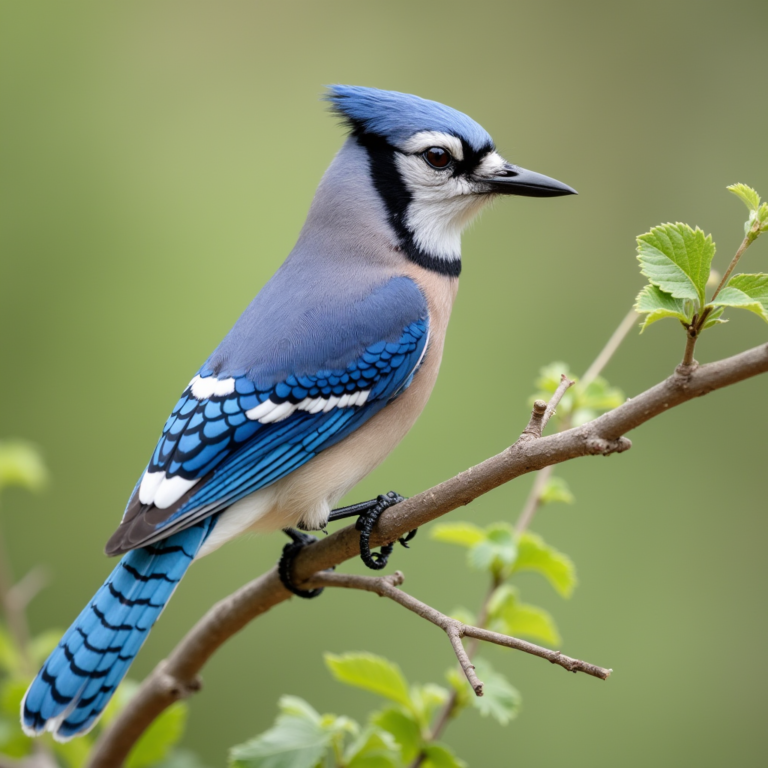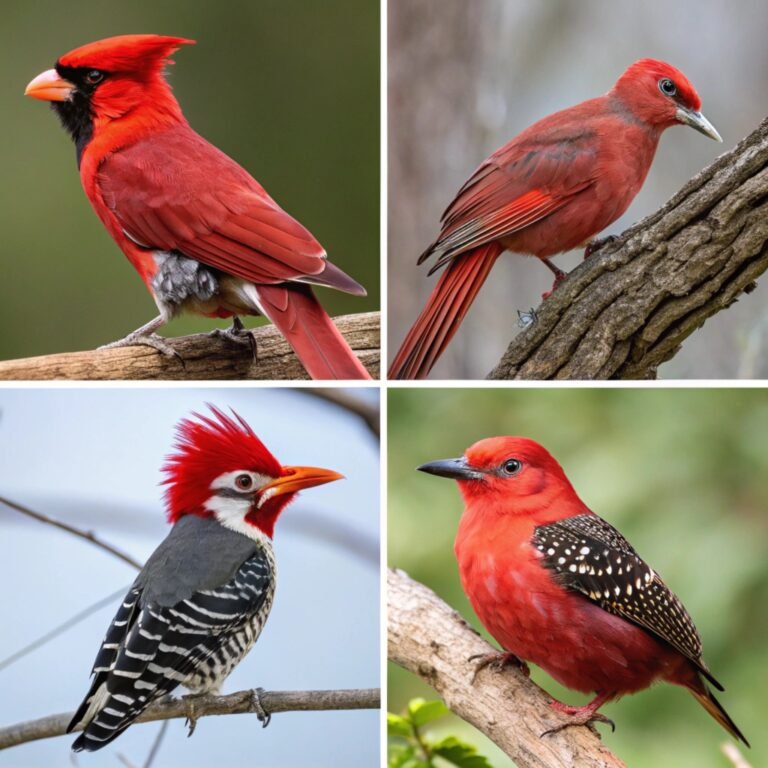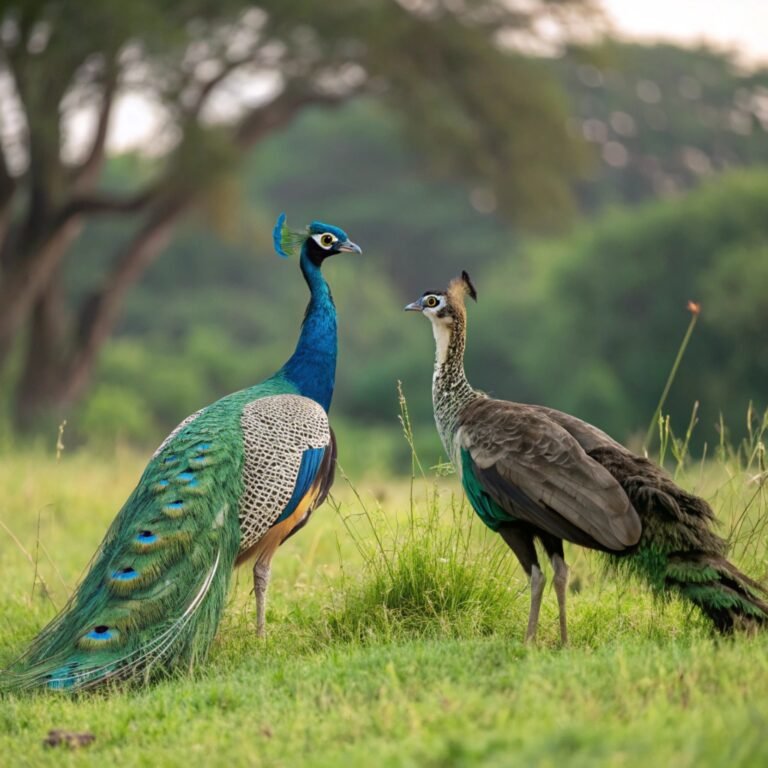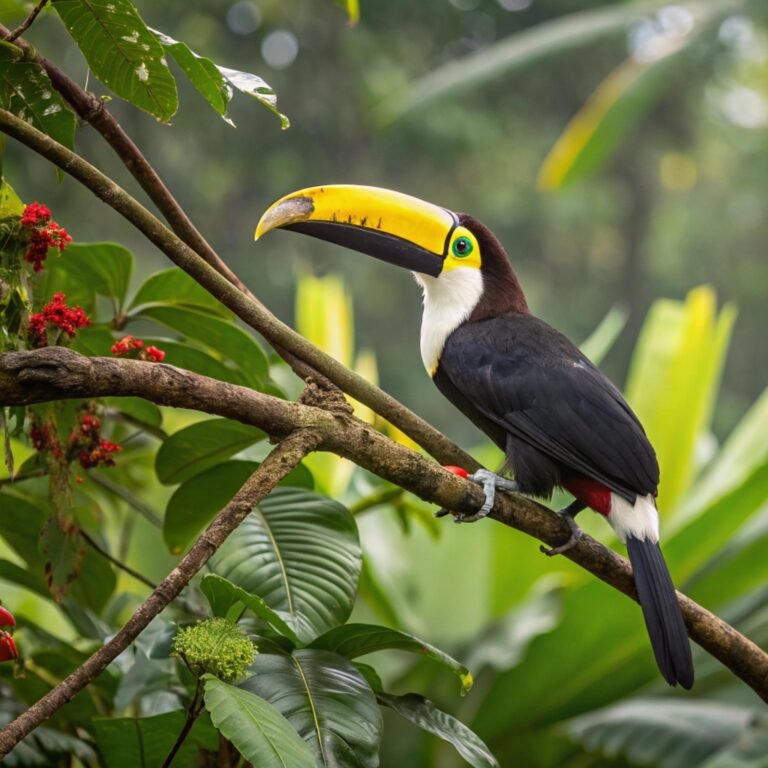Discover the Vibrant World of Blue Birds: A Comprehensive Guide to 10 Stunning Species
Blue birds captivate nature enthusiasts with their striking plumage and melodious songs.
This comprehensive guide explores ten remarkable species of blue birds, delving into their unique characteristics, habitats, and behaviors.
From the familiar Eastern Bluebird to the exotic Blue Bunting, each species offers a fascinating glimpse into the diverse world of avian life.

Key Takeaways:
- Eastern Bluebird: A common sight in North America, known for its bright blue upper parts and rusty-orange breast.
- Western Bluebird: Similar to its eastern counterpart but with a deeper blue coloration and more extensive orange plumage.
- Mountain Bluebird: Distinguished by its all-blue body in males, found in western North America.
- Blue Grosbeak: A larger species with deep blue plumage and prominent wing bars.
- Blue Jay: Easily recognizable by its blue crest and bold personality.
- Cerulean Warbler: A small warbler with sky-blue upper parts and white underparts.
- Lazuli Bunting: Named after its bright blue head and throat, with orange chest and white belly.
- Indigo Bunting: Males are entirely deep blue during breeding season.
- Blue Bunting: Found in Central America, with various shades of blue plumage.
- California Scrub-Jay: A western species with blue and gray plumage and a bold personality.
- Blue birds often inhabit open woodlands, fields, and suburban areas.
- Many blue bird species are migratory, traveling south for the winter.
- Conservation efforts are crucial for some blue bird species facing habitat loss.
- Blue birds play important roles in ecosystems as insect controllers and seed dispersers.
- Birdwatching and providing nest boxes are popular ways to support blue bird populations.
1. Eastern Bluebird: The Iconic Blue Beauty of North America

The Eastern Bluebird (Sialia sialis) is a beloved species that graces the landscapes of eastern North America.
These charming birds are easily recognizable by their vibrant blue upper parts and warm rusty-orange breast in males.
Females display a more subdued coloration, with grayish-blue wings and tail, and a paler orange breast. Eastern Bluebirds typically measure between 6.3 to 8.3 inches in length, with a wingspan of 9.8 to 12.6 inches.
These birds prefer open habitats with scattered trees, such as meadows, old fields, and golf courses. They are cavity nesters, often utilizing nest boxes provided by bird enthusiasts.
Eastern Bluebirds feed primarily on insects during the breeding season, switching to fruits and berries in winter.
Their soft, warbling song is a welcome sound of spring, and their presence is often considered a sign of a healthy ecosystem.
2. Western Bluebird: The Sapphire Gem of the West
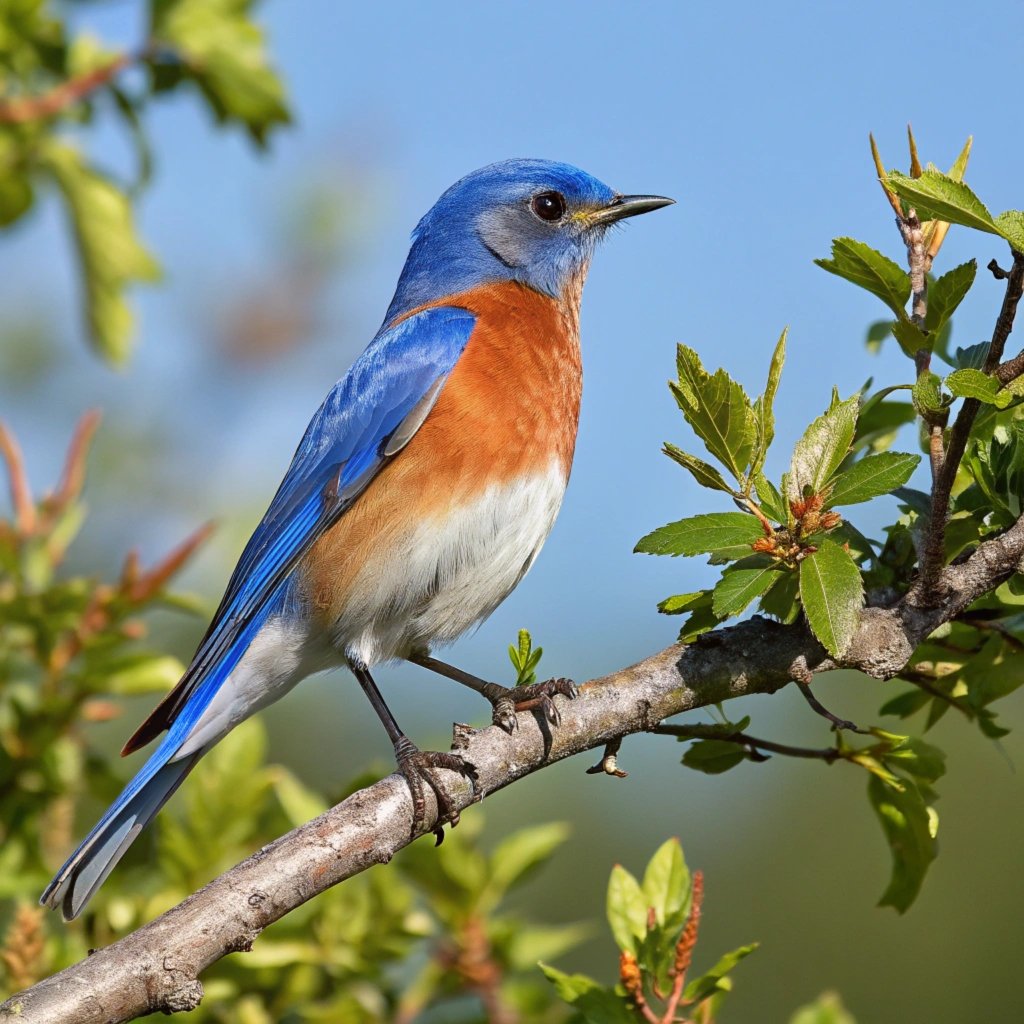
The Western Bluebird (Sialia mexicana) is a close relative of the Eastern Bluebird, found in the western regions of North America.
Males of this species boast a deeper blue coloration on their head, throat, back, and wings, complemented by a rich orange chest and flanks.
Females exhibit a more muted palette, with grayish-blue upper parts and paler orange underparts.
Western Bluebirds typically inhabit open woodlands, forest edges, and areas with scattered trees.
These birds are slightly smaller than their eastern counterparts, measuring about 6.5 to 7.5 inches in length.
Western Bluebirds are adaptable foragers, consuming a variety of insects, fruits, and berries. They play a crucial role in pest control in agricultural areas.
Like other bluebird species, they are cavity nesters and readily accept nest boxes, making them popular among bird enthusiasts in the western states.
3. Mountain Bluebird: The Sky-Blue Wonder of High Altitudes
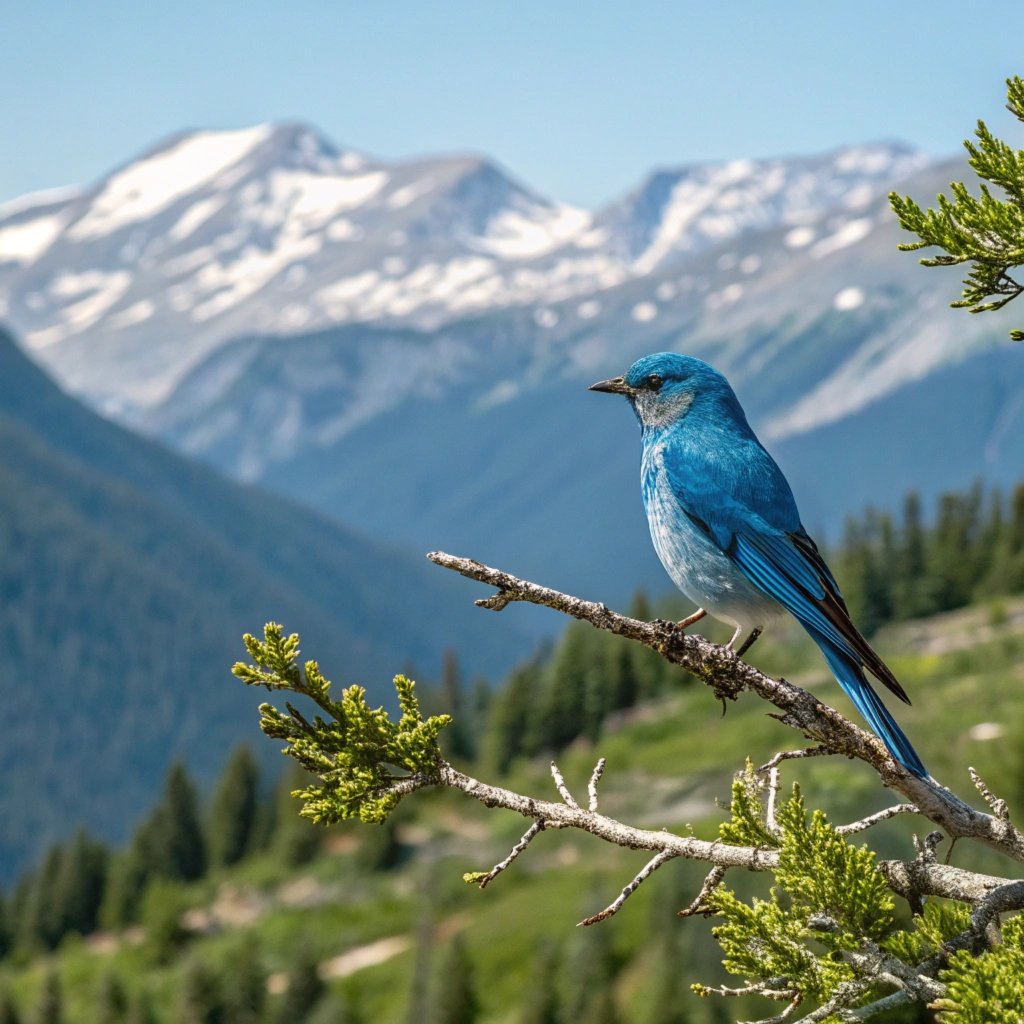
The Mountain Bluebird (Sialia currucoides) is a stunning species that inhabits the higher elevations of western North America. Male Mountain Bluebirds are unmistakable, with their entirely sky-blue body, slightly darker on the wings and tail.
Females are more subtly colored, with grayish-brown upper parts and hints of blue on the wings and tail. These birds are slightly larger than other bluebird species, measuring 6.5 to 7.5 inches in length.
Mountain Bluebirds prefer open habitats at higher elevations, including mountain meadows, grasslands, and sagebrush plains.
They are expert hoverers, often seen fluttering in place before diving to catch insects on the ground.
During breeding season, Mountain Bluebirds form monogamous pairs and nest in tree cavities or nest boxes.
Their ethereal blue coloration against the backdrop of mountain landscapes makes them a favorite among birdwatchers and nature photographers.
4. Blue Grosbeak: The Robust Blue Songster
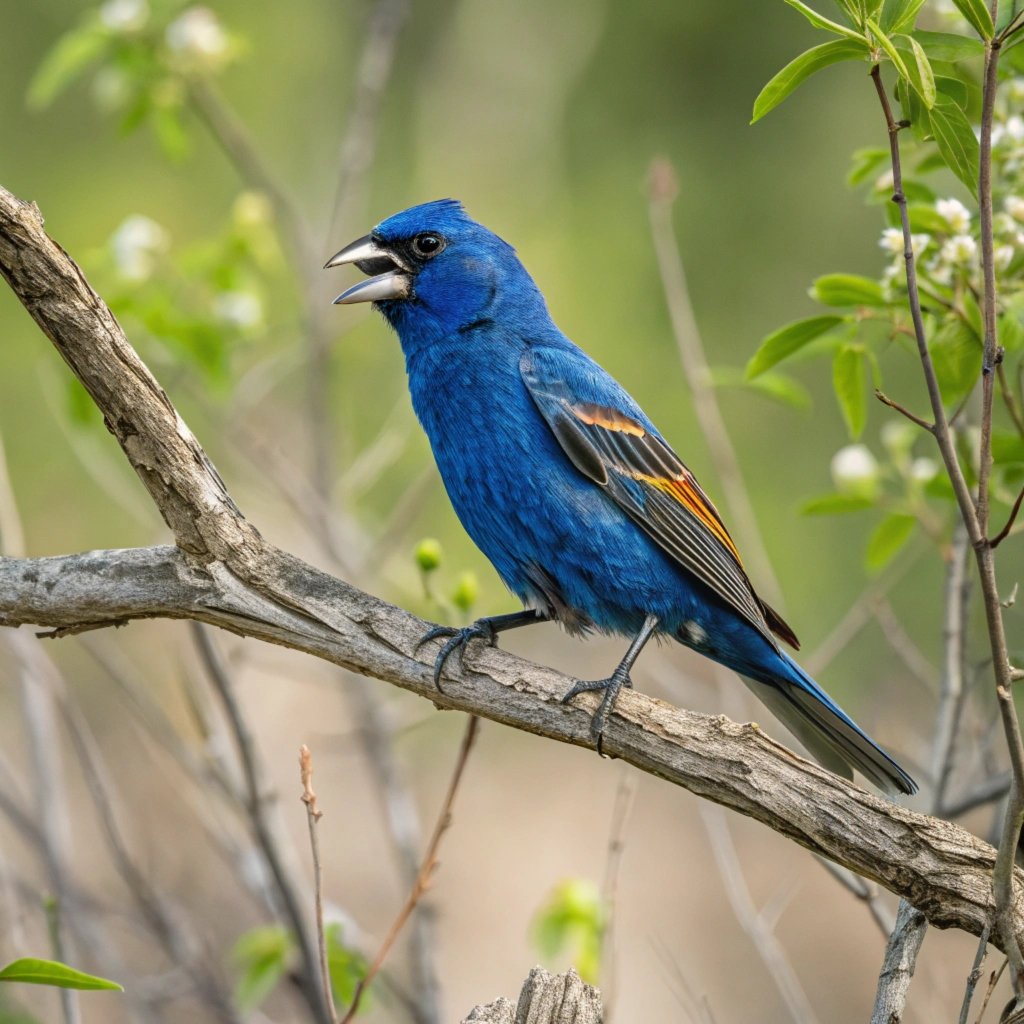
The Blue Grosbeak (Passerina caerulea) is a larger member of the blue bird family, known for its deep blue plumage and robust build.
Males display a rich, dark blue coloration across most of their body, with black wing bars and a small black face mask.
Females are predominantly brown with bluish tinges on the rump and tail. Blue Grosbeaks measure about 5.5 to 7.5 inches in length, with a distinctively large, conical bill adapted for cracking seeds.
These birds inhabit brushy areas, woodland edges, and overgrown fields across the southern United States and parts of Central America.
Blue Grosbeaks are known for their melodious songs, often delivered from exposed perches. Their diet consists of a mix of insects, seeds, and fruits.
During breeding season, females construct cup-shaped nests in shrubs or low trees, while males defend territories with their vibrant displays and songs.
5. Blue Jay: The Bold and Brilliant Backyard Visitor
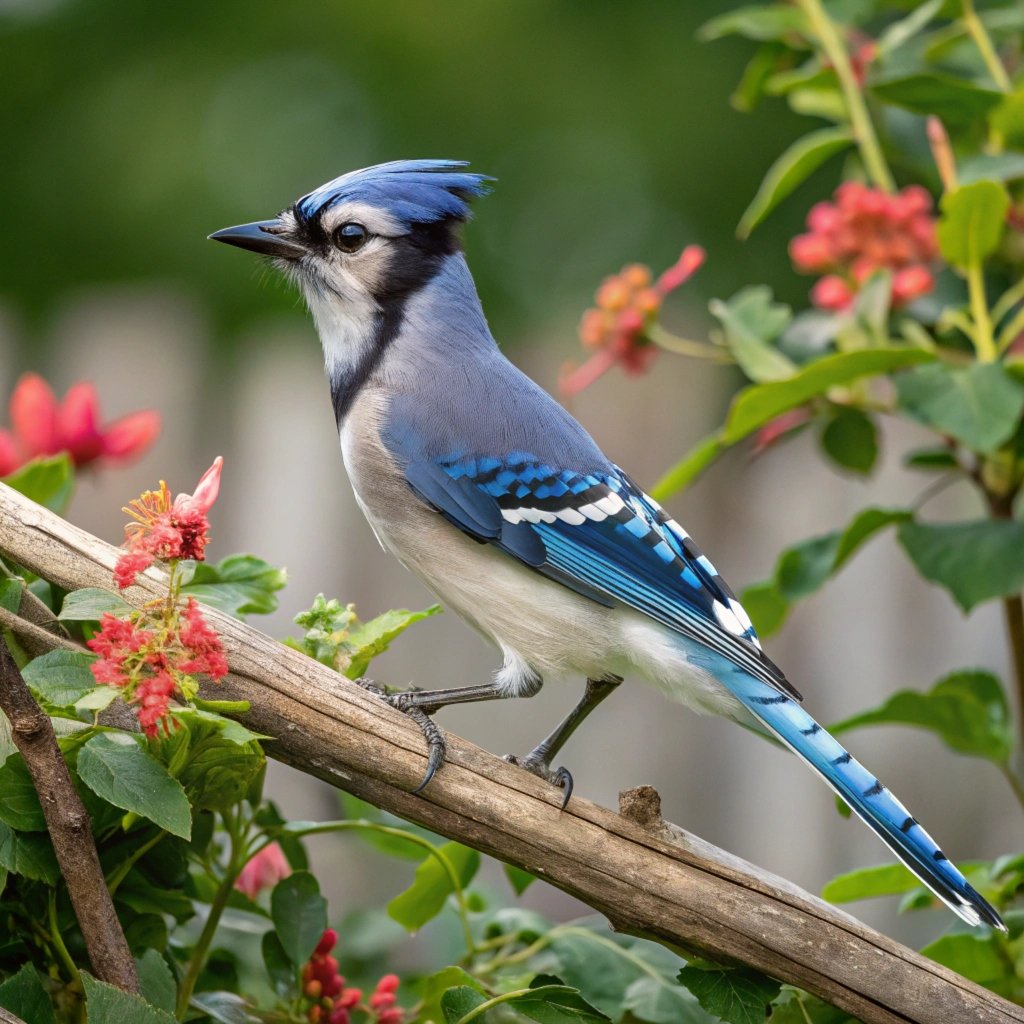
The Blue Jay (Cyanocitta cristata) is one of the most recognizable and charismatic blue birds in North America.
These large, crested songbirds are adorned with vibrant blue, white, and black plumage, featuring a distinctive black necklace and white wing bars.
Blue Jays measure 9 to 12 inches in length, making them one of the larger blue bird species. Known for their intelligence and bold personality, Blue Jays are common visitors to backyard feeders and inhabit a variety of wooded areas.
These birds are omnivorous, consuming insects, nuts, seeds, and occasionally small vertebrates.
Blue Jays are known for their diverse vocalizations, including their characteristic loud, harsh “jay” call and their ability to mimic the calls of other birds, including hawks.
They play important roles in forest ecosystems as seed dispersers and are known for their complex social behaviors within family groups.
6. Cerulean Warbler: The Sky-Blue Gem of the Canopy
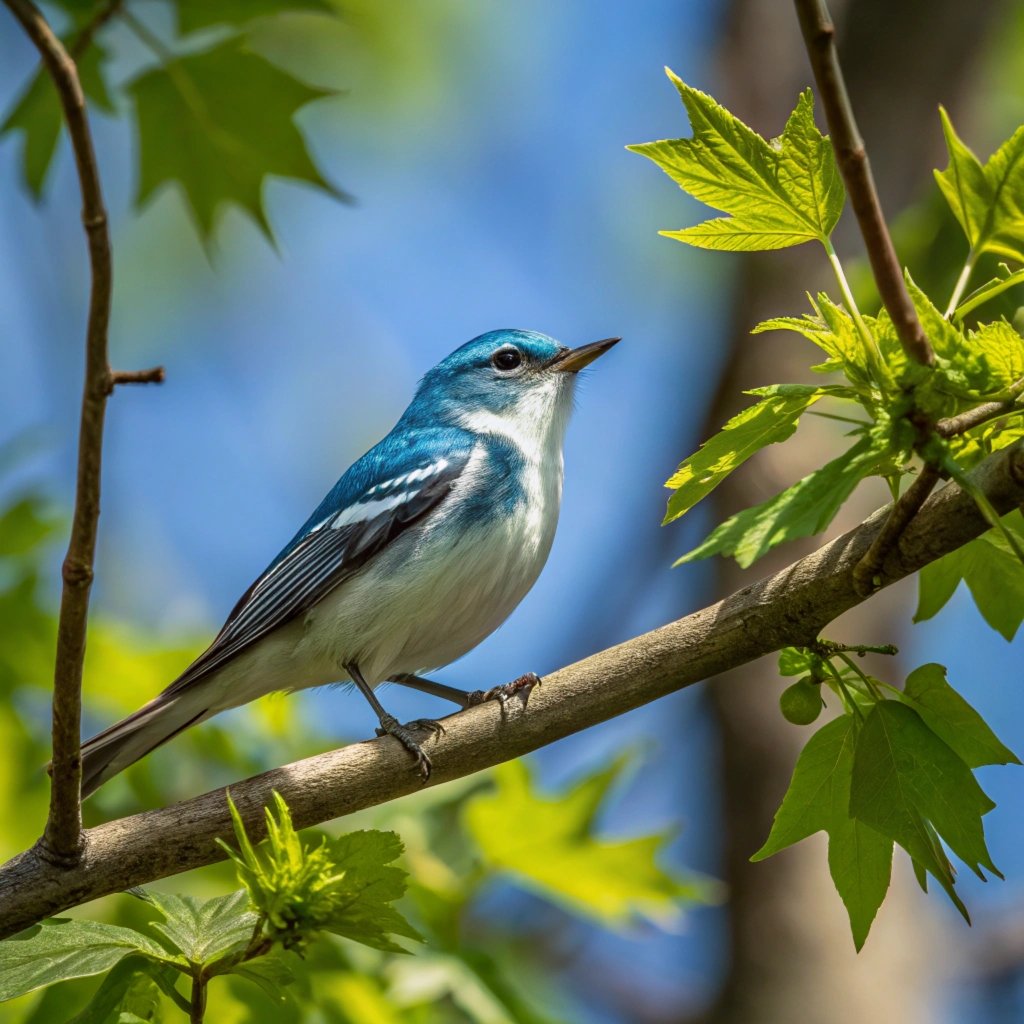
The Cerulean Warbler (Setophaga cerulea) is a small, elusive songbird known for its striking sky-blue plumage. Males display a vibrant cerulean blue upper body with white underparts and a distinctive black necklace.
Females are more subdued, with bluish-green upper parts and a yellowish tinge to their underside.
These diminutive birds measure only 4.5 to 5 inches in length, making them one of the smallest blue bird species.
Cerulean Warblers inhabit the canopy of mature deciduous forests in eastern North America, preferring large tracts of unbroken forest.
They are long-distance migrants, wintering in South America. These warblers are insectivores, gleaning small insects and spiders from leaves high in the treetops.
Unfortunately, Cerulean Warblers have experienced significant population declines due to habitat loss, making them a species of conservation concern.
Their high-pitched, buzzy song is a prized sound for birdwatchers lucky enough to spot these canopy-dwelling beauties.
7. Lazuli Bunting: The Jewel of the Western Grasslands

The Lazuli Bunting (Passerina amoena) is a stunning small songbird found in the western United States.
Male Lazuli Buntings are adorned with a bright blue head and back, rusty orange breast, and white belly, creating a striking tricolor appearance.
Females are more subtly colored, with grayish-brown upper parts and a pale buff breast. These birds measure about 5.5 inches in length, making them compact yet eye-catching.
Lazuli Buntings inhabit brushy areas, open woodlands, and grasslands with scattered shrubs. They are migratory, spending winters in Mexico and returning to their breeding grounds in spring.
These buntings feed on a variety of insects and seeds, often foraging on the ground or in low vegetation.
Male Lazuli Buntings are known for their melodious songs, which they deliver from exposed perches to attract mates and defend territories.
Their vibrant coloration and sweet songs make them a favorite among birdwatchers in the western states.
8. Indigo Bunting: The Brilliant Blue Songster of Eastern Woodlands

The Indigo Bunting (Passerina cyanea) is a small yet strikingly beautiful songbird found in eastern North America.
Male Indigo Buntings are renowned for their brilliant blue plumage during the breeding season, which appears almost iridescent in sunlight. Females and non-breeding males are a more subdued brown color with subtle blue tinges.
These birds measure about 4.5 to 5.5 inches in length, making them one of the smaller blue bird species. Indigo Buntings inhabit woodland edges, overgrown fields, and brushy areas.
They are migratory, spending winters in Central America and the Caribbean. These buntings have a diverse diet, consuming insects, seeds, and berries.
Male Indigo Buntings are known for their persistent singing, often delivering their cheerful melodies from high perches throughout the day.
Their vibrant coloration and melodious songs make them a favorite among birdwatchers and nature enthusiasts across eastern North America.
9. Blue Bunting: The Tropical Blue Jewel
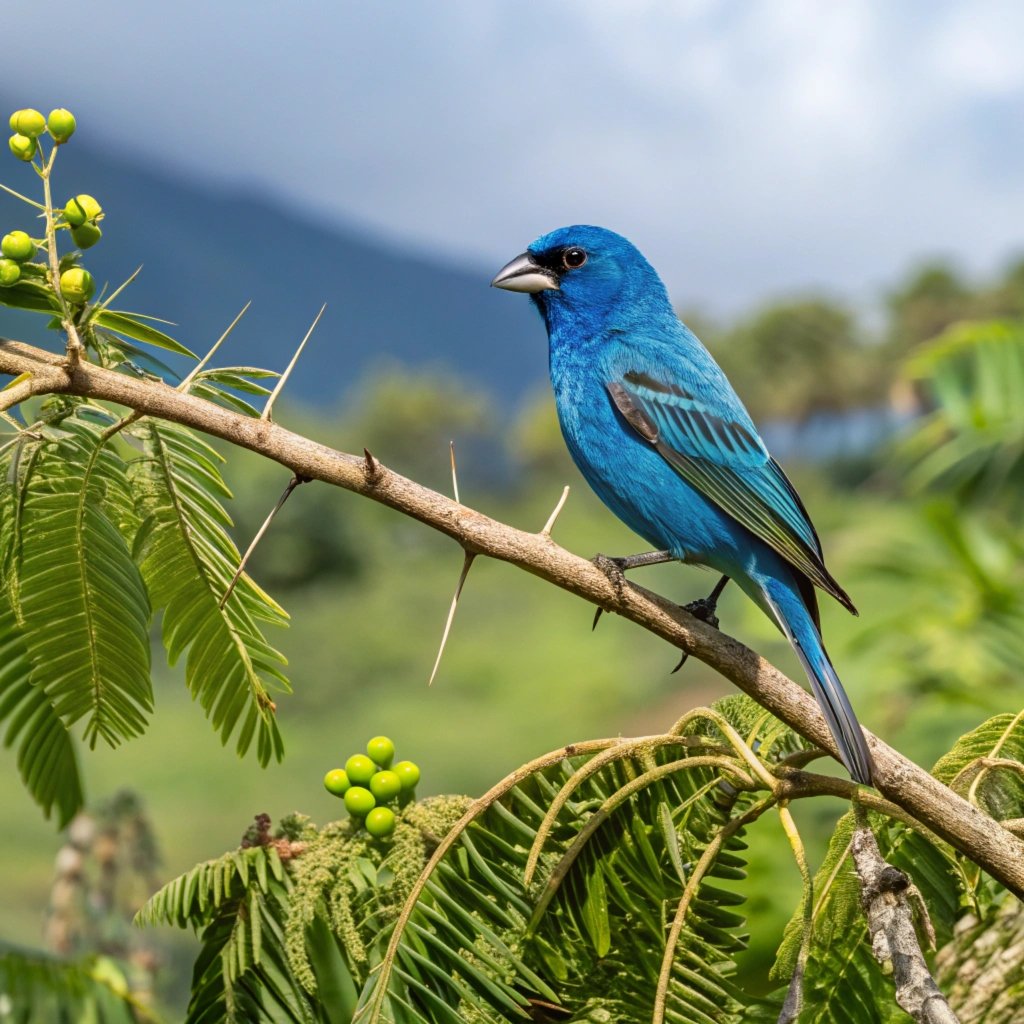
The Blue Bunting (Cyanocompsa parellina) is a captivating species found in parts of Central America and occasionally spotted in the southern United States.
Male Blue Buntings are adorned with deep blue plumage across their entire body, with darker shades on the wings and tail. Females display a more subdued brownish coloration.
These birds measure about 5.5 to 6 inches in length, making them similar in size to other bunting species. Blue Buntings inhabit tropical and subtropical forests, often preferring areas with dense undergrowth.
They are primarily non-migratory, maintaining their territories year-round in their tropical habitats.
These buntings feed on a variety of seeds, fruits, and insects, foraging in the lower levels of the forest.
Male Blue Buntings are known for their melodious songs, which they use to attract mates and defend territories.
While less common than some other blue bird species, their striking appearance makes them a prized sighting for birdwatchers venturing into their tropical range.
10. California Scrub-Jay: The Bold Blue Sentinel of the West

The California Scrub-Jay (Aphelocoma californica) is a charismatic and intelligent blue bird species found along the western coast of North America.
These birds display a striking combination of blue and gray plumage, with a blue head, wings, and tail, contrasted by a grayish back and white underparts.
They measure about 11 to 12 inches in length, making them one of the larger blue bird species. California Scrub-Jays inhabit a variety of habitats, including oak woodlands, chaparral, and suburban areas with sufficient tree cover.
These birds are non-migratory, maintaining their territories year-round. Known for their bold and curious nature, California Scrub-Jays have a diverse diet that includes insects, fruits, nuts, and occasionally small vertebrates.
They are also known for their problem-solving abilities and complex social behaviors. Their raucous calls and striking appearance make them a familiar and beloved presence in western landscapes, from backyard gardens to wild chaparral.
FAQs
What makes birds appear blue?
The blue color in birds is not due to pigments but rather to the structural coloration of their feathers. The microscopic structure of the feathers scatters light in a way that reflects blue wavelengths, creating the appearance of blue plumage.
Are all blue birds related?
No, not all blue birds are closely related. The blue coloration has evolved independently in various bird families. For example, bluebirds are thrushes, while blue jays are corvids, and buntings belong to the cardinal family.
Do blue birds migrate?
Many blue bird species are migratory, especially those that breed in northern regions. However, migration patterns vary among species and populations. Some blue birds, like the California Scrub-Jay, are largely non-migratory.
How can I attract blue birds to my yard?
To attract blue birds, provide suitable habitats such as open areas with scattered trees. Install nest boxes designed for blue birds, offer mealworms or berry-producing plants, and maintain a water source. Avoid using pesticides to ensure a healthy insect population for the birds to feed on.
Are any blue bird species endangered?
While most common blue bird species are not currently endangered, some, like the Cerulean Warbler, face significant population declines due to habitat loss. Conservation efforts are ongoing to protect these and other vulnerable bird species.

Hello, I’m Emily Price, the founder of Birds Affection. As a passionate bird enthusiast and spiritual seeker, I’ve always been fascinated by the symbolic meanings and mystical connections between birds and our lives. On this website, I share my knowledge and insights on the spiritual significance of various bird species, exploring their roles as messengers, guides, and teachers. Through my writing, I aim to inspire and educate others on the profound wisdom and beauty that birds bring to our world. Join me on this journey as we delve into the enchanting realm of bird symbolism and discover the hidden meanings behind these magnificent creatures.


